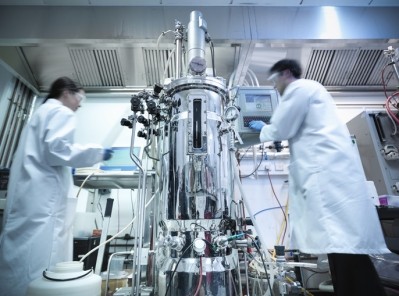‘A key way to minimalize environmental impact of manufacturing biopharmaceutical drug substance is to drive process intensification’

Higher yielding processes, faster manufacturing and fewer consumables can all help drive significant reductions in environmental impact, highlight a group of authors including scientists from Genentech, GlaxoSmithKline and Merck & Co in a paper published in New Biotechnology.
“The process intensification approach aligns perfectly with the direction of the biopharmaceutical industry striving to reduce cost of goods and increase patient access to novel medicines while reducing the impact on the environment,” they note.
Life Cycle Assessment
The goal of the study, entitled ‘Streamlined life cycle assessment of single use technologies (SUT) in biopharmaceutical manufacture, was to highlight where pharmaceutical companies, and biologics producers in particular, can reduce the environmental impact of their drug substance manufacturing.
The focus on biologics was chosen given their rapid growth and their status as being ‘on target to become the main therapeutic modalities for acute and chronic disease treatment’.
Additionally, the generic monoclonal antibody manufacturing train assessed is a mass-intensive manufacturing process.
Electricity guzzling processes
The researchers, who all come from American Chemical Society Green Chemistry Institute Pharmaceutical Roundtable member companies, undertook a streamlined cradle-to-gate life cycle assessment on a biological bulk drug substance (BDS) manufacturing process utilizing SUT at the 2000 L scale.
The results showed that the largest contribution to the life cycle environmental impact for an SUT process was the electricity used to operate the plant: thus illustrating the importance of addressing electricity consumption and sourcing for renewable sources.
“By far the largest contributor to environmental impact is the electricity used by the manufacturing facility," they write.
"Of this electricity usage, the vast majority is used to power the cleanroom infrastructure. In reducing electricity consumption per kg of product output, it is important to consider both the cleanroom classifications used, as well as “time in plant”.
"If fully closed processing technology can be deployed, a reduction in cleanroom classifications can be rationalized, greatly reducing air change rates and their associated energy consumption.
"Striving for shorter processing times or less time in-plant will not only reduce the process electricity demand but more importantly will reduce the cleanroom infrastructure contribution.
"The establishment of plant utilization targets and the number of manufacturing shifts are key characteristics to be considered. A plant that sits idle for a third shift further increases the environmental impact per kg of product output.”
Interestingly, the contribution to the environmental footprint from end-of-life due to the use of plastic SUT was deemed to be ‘extremely small’.
Process intensification
“These findings suggest operational changes that increase process efficiency and decrease time in plant are among the best strategies for reducing the life cycle environmental impact of biologics manufacturing.”
While the authors’ focus was on the environmental impact of biopharmaceutical drug manufacturing, their study revealed that process intensification has a big role to play in boosting sustainability and thus they outline it as an important future direction for the industry.
"Aside from securing 100 % renewable energy contracts for a particular manufacturing site, the key to minimizing the environmental impact of manufacturing a biopharmaceutical drug substance is to drive process intensification," they conclude.
"Higher yielding processes that are completed in less time, with fewer consumables, and in manufacturing facilities that are minimized in size relative to the process that they house together, will drive significant reductions in environmental impact.
"An additional opportunity to reduce the environmental impact is to reduce the classification of the manufacturing space due to fully closed processing."










